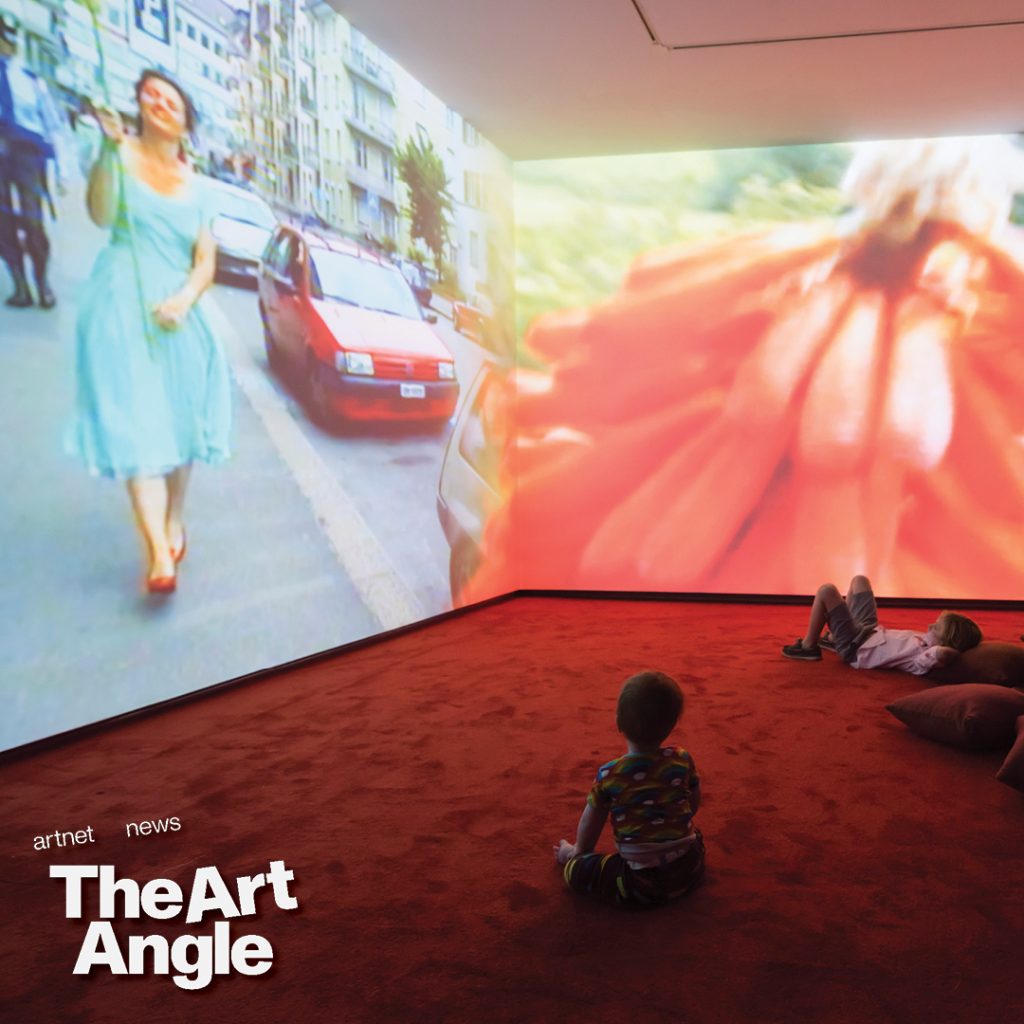The Art Angle
Artnet’s Writers On The Art That Brings Them Joy
This week, we asked Artnet News writers to tell us about a work that brings them joy.

This week, we asked Artnet News writers to tell us about a work that brings them joy.

Artnet News

Welcome to the Art Angle, a podcast from Artnet News that delves into the places where the art world meets the real world, bringing each week’s biggest story down to earth. Join us every week for an in-depth look at what matters most in museums, the art market, and much more, with input from our own writers and editors, as well as artists, curators, and other top experts in the field.
“Art is something that makes you breathe with a different kind of happiness.”
The best of Artnet News in your inbox.
That’s a quote from the great Bauhaus textile artist Anni Albers that gets shared a lot, and is especially relevant for this week’s episode of the podcast on the subject of art and joy. It’s actually a little bit unclear what Albers means when she says that “art is a different kind of happiness,” different from what? While many websites and even an art fair have borrowed this turn of phrase, it’s difficult to find the original source. But the sort of fuzziness of the origins of the quote is perhaps symbolic of the subject itself. Art and happiness seem obvious enough—art gives people pleasure. People like art, looking at art, being surrounded by art, and talking about art. These things are all part of the definition of a life that is rewarding.
But if you look closer to idea that art is happiness, it becomes more slippery, because most of what is considered important art is actually quite serious. The notion of art = happiness might even sound low-brow to a lot of listeners, conjuring up the PBS painter Bob Ross cooing that there are “no mistakes, only happy accidents.” Comedies, too, rarely make the cut when it comes to awards for best picture or lists of all-time great films, and that’s because art that takes emotions like fear, loneliness, or anger, and puts them in a form where we are compelled to look at and reckon with them. After all, that is one classical idea of what good art does—the Greek philosopher Aristotle’s idea of art as catharsis.
Or maybe the idea of happiness in art is considered lowbrow because it’s corrupted by commerce. In Molly Osberg’s excellent essay from New York magazine this past year on art grads using their skills to manufacture work for hotels. “The goal” she wrote, “is to create something that telegraphs the idea of art without the potentially alienating qualities of an actual piece.” And if we live in an environment where the vast majority of the culture that you see each day is optimized to appeal to the most people, to entertain, and to ingratiate, it’s possible that being alienating becomes the way to be taken seriously.
Getting back to that Anni Albers quote, after a little inventive Googling, it turns out to be from a 1968 interview with the artist for the Smithsonian’s Archive of American Art, in which she’s being asked about the value of craft. She says that she thinks that a lot of the late abstract expressionist painters, the people working in the style that had dominated U.S. art at that time, were trying too hard to go for psychodrama and seriousness. She said: “there’s this too-conscious searching of your soul, which very often just turns into this kind of intestinal painting.” But that’s what Albers is drawing a contrast to, when she says in her full quote: “I have this very, what you call today, square idea, that art is something that makes you breathe with a different kind of happiness. The focus on angst as importance can distract from the pleasures that make art fundamentally valuable.” She adds, “I find art is something that gives you something that you need for your life.”
That’s a simple definition, but it means that the kind of happiness Albers is talking about isn’t necessarily about art that just shows you happy things, obviously, though it can be that too. It can just be the happiness of an idea, finding its exact right form.
This week on the podcast, we’re doing something experimental. Artnet News is an art website, and we cover a lot of the stories around the controversies and personalities within the art-world writ large, and the art news is almost always by way of definition, about heavy matters. So as we wrap up this year and look to the next, we asked some of our writers to take some time from their busy work days and tell us about a specific piece of art that delights them.
Below, we’ve linked the artworks each contributor selected.
Jo Lawson-Tancred: Philip Dawe, The Macaroni, a real character of the late masquerade (1773)
Eileen Kinsella: Edouard Manet, The Balcony (1868–69)
Annikka Olsen: Albert Edelfelt, Boys Playing on the Shore (Children Playing on the shore) (1884)
Verity Babbs: William Holman Hunt, The Light of the World (1853)
Ben Davis: Kano Masanobu, Bodhidarma in Red Robes (late 15th century)
Devorah Lautner: Gustav Klimt, The Black Feather Hat (1910)
Vivienne Chow: Tatsuo Miyajima, Painting of Change (2020)
Kate Brown: Pipilotti Rist, Ever Is Over All (1997)
Caroline Goldstein: Florine Stettheimer, The Cathedrals of Art (1942)